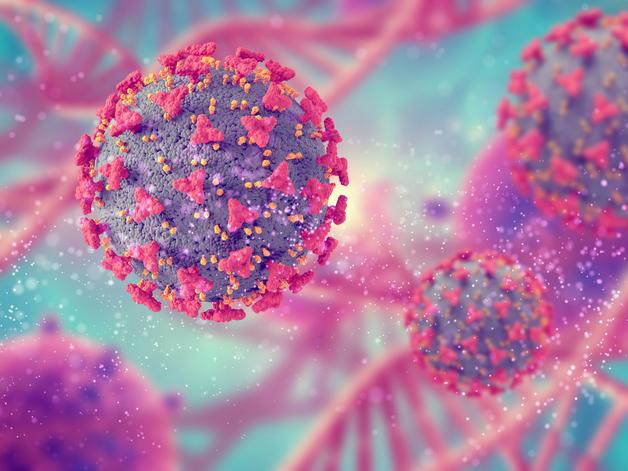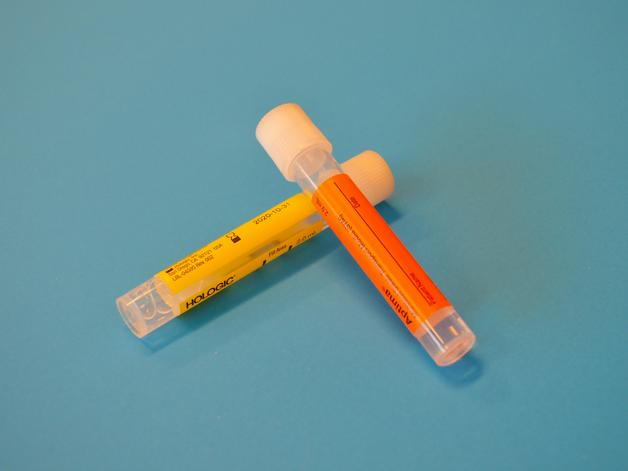When the prospect of parenthood meets the realities of health challenges, worries can take root and blossom quickly. The phrase human papillomavirus pregnancy often triggers a series of anxious questions: Will my baby be safe? Can this affect my fertility? What about delivery? These apprehensions are valid—parents naturally strive for clarity on what HPV infection entails during pregnancy, how it may impact both mother and child, and what steps can be taken to protect family health. With a focus on evidence-based reassurance, let’s untangle the facts, highlight effective screening and prevention strategies, and explain why awareness—not alarm—is the best ally.
What is human papillomavirus (HPV) and how does it relate to pregnancy?
Human papillomavirus is a group of more than 150 types of viruses, most known for their silent presence—often showing no symptoms and disappearing on their own thanks to the immune system. In the general population, this infection is extremely common, and its presence during pregnancy is not unusual.
Yet, not all HPV strains carry the same potential for harm. Among them, low-risk types (such as HPV 6 and 11) commonly cause benign growths like genital warts. In contrast, high-risk types (notably HPV 16 and 18) have been associated with cellular changes that can, over time, increase the risk of cervical and other anogenital cancers. But the journey from infection to complication is typically slow, and most infections resolve naturally without evolving into more serious disease.
During human papillomavirus pregnancy, the body’s immune shifts may encourage the persistence of the virus or even the growth of warts, but the majority of cases unfold without threat to either mother or fetus. The immune system, even when affected by pregnancy hormones, remains a formidable defender.
How does HPV transmission occur—especially during pregnancy?
HPV primarily spreads through skin-to-skin contact involving the genital area. Unlike other sexually transmitted diseases, penetration isn’t necessary; simple close intimate contact is enough. Even vertical transmission—from mother to baby during childbirth—is possible, but it is rare. For most, this means that a diagnosis of human papillomavirus pregnancy isn’t automatically a reason to worry about passing the virus to a newborn.
Some nuances:
- Most infections are silent—no pain, no itching, no visible warts.
- If transmission occurs at birth, the vast majority of exposed babies eliminate the virus naturally within months, with only rare exceptions (like juvenile-onset respiratory papillomatosis—benign growths in the airway which remain a biological rarity).
Does human papillomavirus pregnancy affect conception or fertility?
A question that often arises—sometimes with panic—is whether having HPV could jeopardize fertility. Scientific evidence provides a calm: in most instances, human papillomavirus pregnancy does not hinder conception.
Here’s how it breaks down:
- HPV on sperm may impact DNA and motility, but the effect on overall fertility is minimal based on current research.
- In women, chronic HPV can provoke cervical changes or mild inflammation, which are rarely enough to create significant barriers to embryo implantation or early development.
- Large warts or lesions very occasionally create physical barriers to sperm passage or embryo movement, but these situations are outliers.
So, if the phrase human papillomavirus pregnancy sparks worries about future children or failed attempts at conception, rest assured: the risk to fertility is extremely low for the vast majority of parents.
Potential risks of HPV for mother and baby: separating facts from fear
It’s one thing to have a virus, and quite another to face aggressive illness. The science shows:
- Most HPV infections during human papillomavirus pregnancy remain silent and do not increase the baseline risks for miscarriage, preterm birth, or fetal growth restriction.
- Genital warts can become more noticeable, multiply, or cause irritation due to pregnancy’s hormonal shifts. Their presence can be distressing, both visually and physically, but rarely present a true medical threat.
- Only in rare cases does infection—especially persistent, high-risk strain infection—correlate with a slightly increased risk of miscarriage or preterm birth. These numbers remain low.
- Infants might be exposed to HPV during a vaginal birth, but consequences are uncommon. The immune system of most newborns quickly manages and clears the infection.
Scientific nuance is essential: vertical transmission of HPV rarely leads to significant neonatal issues, and cesarean section is not routinely required unless large warts physically obstruct delivery or create a bleeding risk.
Practical approaches: monitoring, prevention, and evidence-based care
Regular gynecological screening forms the backbone of safety for anyone concerned about human papillomavirus pregnancy. Here’s what that looks like:
- Pap smear and HPV testing remain the gold standard for detecting cervical changes. These can identify early cellular changes long before cancer risk appears.
- Abnormal findings such as cervical intraepithelial neoplasia (CIN) are generally monitored rather than rapidly treated during pregnancy. Unless cancer is suspected, most therapies are postponed, prioritizing maternal and fetal safety.
- Genital wart treatment is individualized. Options such as minor laser removal, cryotherapy, or trichloroacetic acid application might be suggested if warts are painful or bleed easily, always ensuring safety for mother and baby.
HPV vaccination represents a scientific breakthrough for prevention—providing immunity against the most dangerous strains. While vaccination is not advised during pregnancy, starting or completing the vaccine course after childbirth offers sustained future protection.
Additional practical measures include:
- Condom use—effective at reducing, though not eliminating, the risk of HPV transmission.
- Quitting smoking to support local immunity in the cervix.
- Maintaining regular gynecological checkups.
- Practicing good intimate hygiene and avoiding self-medication.
Emotional wellbeing when facing human papillomavirus pregnancy
The unexpected discovery of HPV during pregnancy can feel like a wave of uncertainty, triggering a cascade of emotions—worry for the baby, confusion about personal health, and embarrassment from lingering stigma. It’s natural to feel overwhelmed.
Remember:
- Most human papillomavirus pregnancy cases proceed without major issue.
- Open discussion with an obstetrician, midwife, or general practitioner can demystify most scenarios.
- If feelings of anxiety persist and cloud daily life, reaching out to a psychologist for targeted support is entirely appropriate.
- Education and reliable information are powerful tools—so is compassionate care.
Long-term perspectives: postpartum, follow-up, and outcomes for children
Once pregnancy has concluded and the body’s hormones rebalance, the immune system may naturally clear HPV and any associated lesions. Postpartum follow-up includes a careful gynecological examination—Pap smear and, if indicated, HPV testing—to ensure no concerning changes require treatment.
For children born to mothers who experienced a human papillomavirus pregnancy, research is consistent and reassuring:
- Nearly all exposed infants quickly clear the virus without lingering health issues.
- Rare complications like recurrent respiratory papillomatosis remain exceptions, not the rule.
- Routine cesarean simply for HPV is unwarranted; delivery approach centers on broader obstetric needs.
The long-term outlook for both parent and child remains excellent.
Key Takeaways
- HPV infections are common during pregnancy, frequently unnoticed, and rarely compromise pregnancy outcomes.
- The risk of transmitting HPV to the baby or developing serious complications is low, and effective screening methods like Pap smear provide strong safeguards.
- Most therapies for HPV-related changes during pregnancy are postponed to protect mother and baby, except when urgent intervention is necessary.
- Prevention strategies are well established: vaccination outside of pregnancy, use of condoms, diligent intimate hygiene, tobacco cessation, and regular gynecological checkups.
- Transparent communication with healthcare providers and reliable educational resources help transform anxiety into confident action.
- For extra support, consider downloading the Heloa app for customized advice and free health questionnaires tailored for children.
Questions about human papillomavirus pregnancy deserve careful answers and compassionate support. Reliable information and attentive medical care offer parents a pathway of calm throughout this health journey.
Questions Parents Ask
Can HPV affect breastfeeding or be transmitted through breast milk?
Rest assured, HPV is not transmitted through breast milk. You can continue to breastfeed your baby, as no scientific evidence shows that HPV affects the safety of breastmilk or puts the baby at risk. If you have concerns about skin lesions or warts in the breast area, speak openly with your healthcare provider—they’ll help you find gentle solutions adapted to your situation.
Can HPV cause complications in future pregnancies?
HPV infection generally does not impact future pregnancies. Most cases are temporary, and the body often clears the virus naturally. If you have been treated for cervical changes related to HPV, inform your medical team during any pregnancies to ensure tailored monitoring. Overall, most parents with a history of HPV go on to have uncomplicated pregnancies and healthy babies.
What should I do if I discover I have HPV during pregnancy?
If you find out you have HPV while pregnant, try to stay calm—this situation is more common than you might think. Many infections are asymptomatic and require no immediate intervention. The best approach is regular medical follow-up; your doctor may suggest simple monitoring or gentle treatments if necessary. Transparent communication with your healthcare team can offer reassurance and ensure you feel supported at each step.










